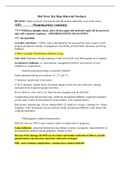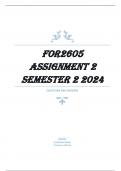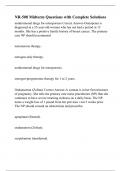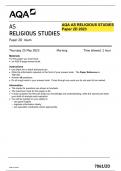Molecular Biology 2433
Ashty S. Karim
Michael C. Jewett
Editors
Cell-Free Gene
Expression
Methods and Protocols
,METHODS IN MOLECULAR BIOLOGY
Series Editor
John M. Walker
School of Life and Medical Sciences
University of Hertfordshire
Hatfield, Hertfordshire, UK
For further volumes:
http://www.springer.com/series/7651
,For over 35 years, biological scientists have come to rely on the research protocols and
methodologies in the critically acclaimed Methods in Molecular Biology series. The series was
the first to introduce the step-by-step protocols approach that has become the standard in all
biomedical protocol publishing. Each protocol is provided in readily-reproducible step-by-
step fashion, opening with an introductory overview, a list of the materials and reagents
needed to complete the experiment, and followed by a detailed procedure that is supported
with a helpful notes section offering tips and tricks of the trade as well as troubleshooting
advice. These hallmark features were introduced by series editor Dr. John Walker and
constitute the key ingredient in each and every volume of the Methods in Molecular Biology
series. Tested and trusted, comprehensive and reliable, all protocols from the series are
indexed in PubMed.
, Cell-Free Gene Expression
Methods and Protocols
Edited by
Ashty S. Karim
Department of Chemical and Biological Engineering, Chemistry of Life Processes Institute, and Center for
Synthetic Biology, Northwestern University, Evanston, IL, USA
Michael C. Jewett
Department of Chemical and Biological Engineering, Chemistry of Life Processes Institute, Center for
Synthetic Biology, Robert H. Lurie Comprehensive Cancer Center, and Simpson Querrey Institute,
Northwestern University, Evanston, IL, USA
,Editors
Ashty S. Karim Michael C. Jewett
Department of Chemical and Biological Department of Chemical and Biological Engineering, Chemistry
Engineering, Chemistry of Life of Life Processes Institute, Center for Synthetic Biology, Robert
Processes Institute, and Center for H. Lurie Comprehensive Cancer Center, and Simpson Querrey
Synthetic Biology Institute
Northwestern University Northwestern University
Evanston, IL, USA Evanston, IL, USA
ISSN 1064-3745 ISSN 1940-6029 (electronic)
Methods in Molecular Biology
ISBN 978-1-0716-1997-1 ISBN 978-1-0716-1998-8 (eBook)
https://doi.org/10.1007/978-1-0716-1998-8
© The Editor(s) (if applicable) and The Author(s), under exclusive license to Springer Science+Business Media, LLC, part
of Springer Nature 2022, Corrected Publication 2022
This work is subject to copyright. All rights are solely and exclusively licensed by the Publisher, whether the whole or part
of the material is concerned, specifically the rights of translation, reprinting, reuse of illustrations, recitation,
broadcasting, reproduction on microfilms or in any other physical way, and transmission or information storage and
retrieval, electronic adaptation, computer software, or by similar or dissimilar methodology now known or hereafter
developed.
The use of general descriptive names, registered names, trademarks, service marks, etc. in this publication does not imply,
even in the absence of a specific statement, that such names are exempt from the relevant protective laws and regulations
and therefore free for general use.
The publisher, the authors and the editors are safe to assume that the advice and information in this book are believed to
be true and accurate at the date of publication. Neither the publisher nor the authors or the editors give a warranty,
expressed or implied, with respect to the material contained herein or for any errors or omissions that may have been
made. The publisher remains neutral with regard to jurisdictional claims in published maps and institutional affiliations.
This Humana imprint is published by the registered company Springer Science+Business Media, LLC, part of Springer
Nature.
The registered company address is: 1 New York Plaza, New York, NY 10004, U.S.A.
,Preface
A recent technical renaissance in cell-free expression (CFE) systems, built on over five
decades of fundamental research, has resulted in highly productive CFE systems and multi-
plexed strategies for rapidly assessing biological design. This volume of Methods in Molecular
Biology explores perspectives and methods using CFE to enable next-generation synthetic
biology applications. The volume is organized into two major parts. The first part focuses on
tools for CFE systems. These include a primer on DNA handling and reproducibility
(Chapter 1), methods for cell extract preparation from diverse organisms (Chapters 2–6),
and enabling high-throughput cell-free experimentation (Chapters 7–10). The second part
provides an array of applications for CFE systems. These chapters highlight some of the
most-promising applications including metabolic manipulation (Chapters 11–13),
membrane-based and encapsulated CFE (Chapters 14–18), cell-free sensing and detection
(Chapters 19–23), and a research education and instructional tool (Chapters 24–25).
Collectively, this volume provides technical methods to current aspects of CFE and related
applications, serving as a versatile cell-free synthetic biology experimental handbook.
Part I: Tools for Cell-Free Expression Systems
CFE systems offer barrier-free control over biological processes to directly probe function,
making it an attractive approach for prototyping genetic parts and designs as well as a suite of
point-of-use applications. Direct access to the reaction environment, however, comes with a
degree of variability with and sensitivity to added components. Thus, having quality control
standards for reagents is essential. With this in mind, Chapter 1 offers a suite of tactics for
DNA handling and reproducibility in CFE systems. This serves as the start to this section of
chapters focused on tools for the wide variety of CFE applications.
Variability in extract quality also has an impact on CFE system performance. Tried and
true methods of extract preparation ensure reliability in CFE experimentation. Chapter 2
shares a simple extract preparation procedure for Escherichia coli, taking notes from the past
20 years of method development. The time at which cells are harvested prior to extract
preparation has a lasting effect on extract quality, with typical extracts being made from
early- to mid-exponential growth. Chapter 3 provides a method for extract preparation from
non-growing Escherichia coli A19 cells, demonstrating how to maintain quality lysate from
cells harvested later in growth. With many applications exploring the prototyping of genetic
parts and designs for cellular systems, mimicking the reaction environment of cellular
systems could improve the predictive power of CFE prototypes. CFE preparation protocols
have been developed for non-model genera like Pichia, Streptomyces, and a few mammalian
systems, among others. By having a diversity of available extracts, researchers can match the
CFE system with cellular species of interest for potentially enhanced predictive power.
Chapter 4 shares a procedure for making Pichia pastoris extracts; Chapter 5 provides an
approach to making extracts from Streptomyces cells; and Chapter 6 offers a method for
HeLa cell-based extracts and their use for membrane-bound protein production. Whatever
the application these methods provide a framework for reliable extract preparation and
highlight key parameters for extending extract preparation to new species.
v
,vi Preface
A key advantage of CFE is the ability to prepare reactions rapidly and in high through-
put, making CFE ideal for use of liquid-handling systems. The non-extract reagents can be
quite challenging, though, as they come in many varieties and the way in which these
reagents are assembled into a CFE reaction can dramatically affect the application of interest.
The energy source, cofactors, DNA, nucleotides, and tRNAs can all play an important role in
cell-free activity. The next set of chapters provide tools for high-throughput CFE. Chapter 7
demonstrates CFE systems’ amenability to automation, providing tips for automating cell-
free experimentation. Toward high-throughput CFE and screening, Chapter 8 shows how
DNA brushes can be used as the DNA templates for CFE. Chapter 9 describes the use of
in vitro transcribed, modified tRNAs for enhanced CFE. Rounding out this section,
Chapter 10 delivers an approach to measure transcription, translation, and enzymatic
processes using PERSIA, an RNA-based method for quantification.
Part II: Applications of Cell-Free Expression Systems
Beyond prototyping genetic parts and designs, CFE can enable applications in biomanu-
facturing, artificial cells, sensing, and education. Part II of this volume catalogs an array of
these applications and their methods. Fueling transcription, translation, and other biological
functions is metabolism. Cell-free systems necessitate the appropriate biochemical environ-
ment to meet ATP and redox demand. CFE systems support highly integrated, multistep
metabolic networks that can be understood, modified, and controlled. Controlling native
metabolic pathways and implementing new ones enables a new application space for CFE.
Toward powering biochemical transformations, Chapter 11 introduces a method for
operating a noncanonical redox cofactor system; Chapter 12 outlines an approach for
using CFE to express enzymes and assemble complete biosynthetic pathways for testing;
and Chapter 13 demonstrates the use of gas chromatography for the measurement and
analysis of cell-free biochemical processes. Together these chapters provide the important
methods and concepts for cell-free biomanufacturing applications.
CFE systems are ideally suited for the building of artificial cells integrating multiple
genetic and metabolic designs. Many laboratories have recapitulated cellular functions by
encapsulating CFE systems and synthetic gene circuits inside liposomes. One challenging
aspect of this work is developing the right formulation and process to make these compart-
ments. Thus, Chapter 14 offers a strategy using a 3D-printed microcapillary-based appara-
tus for robust and tunable liposome preparation. A complementary approach to producing
cell-mimics using a microfluidic apparatus is provided in Chapter 15. Hybrid lipid and
polymer formulations are used to enable high-yielding protein synthesis in vesicles in
Chapter 16. Monitoring CFE activity in vesicles can be challenging. To address this,
Chapter 17 allows for assessment of co-translational folding of proteins within lipid mem-
branes. Beyond creating and assessing these encapsulated systems, controlling synthetic cells
through self-assembling structures and information is important. Chapter 18 creates RNA
nanostructures from double crossover tiles for use with CFE systems. These methods have
and will allow for compartmentalization of CFE with applications in energy production,
synthetic “cell-cell” communication, reproduction, and uncovering the rules of life.
CFE has had its point-of-use-application success in cell-free biosensing. Cell-free reac-
tions can sense an analyte of interest by programmed expression of a reporter output (usually
a protein) only when the tested sample contains the target analyte. The advantages of cell-
free sensing are that they can detect cytotoxic analytes, the sensors are not subject
, Preface vii
to evolutionary changes, and they are not attendant to constraints on genetically modified
organisms (GMOs). With these technological advances, key progress in cell-free biosensing
thus far has been made for the detection of chemical contaminants, disease-causing viruses
and bacteria, and biological functions, in strategies that are both rapid and inexpensive.
Chapter 19 applies artificial intelligence to cell-free biosensor design allowing for improved
sensing functions. Chapter 20 provides a method for using purified allosteric transcription
factors that bind chemical contaminants to regulate expression of a fluorescent RNA
aptamer in a freeze-dried cell-free transcription-only reaction (ROSALIND). Chapter 21
switches the input of the sensing function to changes in light for optical sensing applications.
Chapter 22 looks at a strategy for nucleic acid detection in the gut microbiota using toehold
switches. In a complementary approach for nucleic acid detection, Chapter 23 uses iso-
thermal nucleic acid amplification for the detection of Norovirus using paper-based cell-free
sensors.
Beyond sensing, CFE is a powerful tool to understand biology and features of biological
processes for both research and instructional purposes. On the research side, Chapter 24
explores the detection and identification of PAM sequences for CRISPR-Cas systems.
Discovering new PAM sequences can expand the scope of CRISPR applications. On the
instructional side, the ease-of-use, inexpensive assembly, and open reaction environment of
CFE systems make them prime for molecular and synthetic biology education. Chapter 25
provides a manual of sorts for hands-on BioBits cell-free educational kits to train the next
generation of scientists and engineers.
The cell-free synthetic biology community is growing, and with each new technological
advance comes a swath of new and improved cell-free applications. This volume, which we
dedicate to James R. Swartz from Stanford University who is a leading pioneer and founder
of the field, catalogs some of the most compelling methods for cell-free expression systems
from some of the top experts in the field. We gratefully thank each of our contributing
authors for their work in providing cell-free tips and tricks from their laboratories. We hope
these methods provide you with clarity and inspiration for your endeavors in the cell-free
synthetic biology community.
Evanston, IL, USA Ashty S. Karim
Michael C. Jewett
,Contents
Preface . . . . . . . . . . . . . . . . . . . . . . . . . . . . . . . . . . . . . . . . . . . . . . . . . . . . . . . . . . . . . . . . . . . . . v
Contributors. . . . . . . . . . . . . . . . . . . . . . . . . . . . . . . . . . . . . . . . . . . . . . . . . . . . . . . . . . . . . . . . . xi
PART I TOOLS FOR CELL-FREE EXPRESSION SYSTEMS
1 Best Practices for DNA Template Preparation Toward Improved
Reproducibility in Cell-Free Protein Production . . . . . . . . . . . . . . . . . . . . . . . . . . . . 3
Eugenia F. Romantseva, Drew S. Tack, Nina Alperovich, David Ross,
and Elizabeth A. Strychalski
2 Simple Extract Preparation Methods for E. coli-Based Cell-Free
Expression . . . . . . . . . . . . . . . . . . . . . . . . . . . . . . . . . . . . . . . . . . . . . . . . . . . . . . . . . . . . . 51
Alissa C. Mullin, Taylor Slouka, and Javin P. Oza
3 Preparation and Screening of Cell-Free Extract from Nongrowing
Escherichia coli A19 Cells . . . . . . . . . . . . . . . . . . . . . . . . . . . . . . . . . . . . . . . . . . . . . . . . 65
Florian Hiering, Jurek Failmezger, and Martin Siemann-Herzberg
4 Cell-Free Protein Synthesis Using Pichia pastoris . . . . . . . . . . . . . . . . . . . . . . . . . . . 75
Alex J. Spice, Rochelle Aw, and Karen M. Polizzi
5 A Streptomyces-Based Cell-Free Protein Synthesis System for High-Level
Protein Expression . . . . . . . . . . . . . . . . . . . . . . . . . . . . . . . . . . . . . . . . . . . . . . . . . . . . . . 89
Huiling Xu, Wan-Qiu Liu, and Jian Li
6 In Vitro Reconstitution Platforms of Mammalian Cell-Free Expressed
Membrane Proteins . . . . . . . . . . . . . . . . . . . . . . . . . . . . . . . . . . . . . . . . . . . . . . . . . . . . . 105
Hossein Moghimianavval, Yen-Yu Hsu, Alessandro Groaz, and Allen P. Liu
7 High-Throughput Experimentation Using Cell-Free Protein
Synthesis Systems . . . . . . . . . . . . . . . . . . . . . . . . . . . . . . . . . . . . . . . . . . . . . . . . . . . . . . . 121
Conary Meyer, Chuqing Zhou, Zecong Fang, Marjorie L. Longo,
Tingrui Pan, and Cheemeng Tan
8 Cell-Free Gene Expression from DNA Brushes . . . . . . . . . . . . . . . . . . . . . . . . . . . . . 135
Michael Levy, Ohad Vonshak, Yiftach Divon, Ferdinand Greiss, Noa Avidan,
Shirley S. Daube, and Roy H. Bar-Ziv
9 Efficient and Precise Protein Synthesis in a Cell-Free System Using a Set
of In Vitro Transcribed tRNAs with Nucleotide Modifications. . . . . . . . . . . . . . . . 151
Kazuaki Amikura, Keita Hibi, and Yoshihiro Shimizu
10 Measurement of Transcription, Translation, and Other Enzymatic
Processes During Cell-Free Expression Using PERSIA . . . . . . . . . . . . . . . . . . . . . . 169
Scott Wick and Peter A. Carr
PART II APPLICATIONS OF CELL-FREE EXPRESSION SYSTEMS
11 Cell-Free Noncanonical Redox Cofactor Systems . . . . . . . . . . . . . . . . . . . . . . . . . . . 185
William B. Black and Han Li
ix
, x Contents
12 Cell-Free Protein Synthesis for High-Throughput Biosynthetic Pathway
Prototyping . . . . . . . . . . . . . . . . . . . . . . . . . . . . . . . . . . . . . . . . . . . . . . . . . . . . . . . . . . . . 199
Blake J. Rasor, Bastian Vögeli, Michael C. Jewett, and Ashty S. Karim
13 Metabolomics Analysis of Cell-Free Expression Systems Using Gas
Chromatography-Mass Spectrometry. . . . . . . . . . . . . . . . . . . . . . . . . . . . . . . . . . . . . . 217
April M. Miguez, Yan Zhang, and Mark P. Styczynski
14 Liposome Preparation by 3D-Printed Microcapillary-Based Apparatus. . . . . . . . . 227
Orion M. Venero, Wakana Sato, Joseph M. Heili, Christopher Deich,
and Katarzyna P. Adamala
15 Microfluidic Production of Porous Polymer Cell-Mimics Capable
of Gene Expression . . . . . . . . . . . . . . . . . . . . . . . . . . . . . . . . . . . . . . . . . . . . . . . . . . . . . 237
Imre Banlaki, François-Xavier Lehr, and Henrike Niederholtmeyer
16 Cell-Free Membrane Protein Expression into Hybrid Lipid/Polymer
Vesicles . . . . . . . . . . . . . . . . . . . . . . . . . . . . . . . . . . . . . . . . . . . . . . . . . . . . . . . . . . . . . . . . 257
Miranda L. Jacobs and Neha P. Kamat
17 Cell-Free Synthesis Strategies to Probe Co-translational Folding of Proteins
Within Lipid Membranes . . . . . . . . . . . . . . . . . . . . . . . . . . . . . . . . . . . . . . . . . . . . . . . . 273
Nicola J. Harris, Eamonn Reading, and Paula J. Booth
18 Assembly of RNA Nanostructures from Double-Crossover Tiles. . . . . . . . . . . . . . 293
Jaimie Marie Stewart, Hari K. K. Subramanian, and Elisa Franco
19 Cell-Free Biosensors and AI Integration . . . . . . . . . . . . . . . . . . . . . . . . . . . . . . . . . . . 303
Paul Soudier, Léon Faure, Manish Kushwaha, and Jean-Loup Faulon
20 ROSALIND: Rapid Detection of Chemical Contaminants with In Vitro
Transcription Factor-Based Biosensors. . . . . . . . . . . . . . . . . . . . . . . . . . . . . . . . . . . . . 325
Jaeyoung K. Jung, Khalid K. Alam, and Julius B. Lucks
21 Optical Sensing in Cell-Free Expression . . . . . . . . . . . . . . . . . . . . . . . . . . . . . . . . . . . 343
Junzhu Yang and Yuan Lu
22 Cell-Free Paper-Based Analysis of Gut Microbiota and Host Biomarkers. . . . . . . 351
Melissa K. Takahashi, Xiao Tan, and Aaron J. Dy
23 Detection of Norovirus Using Paper-Based Cell-Free Systems . . . . . . . . . . . . . . . . 375
Kaiyue Wu and Alexander A. Green
24 A TXTL-Based Assay to Rapidly Identify PAMs for CRISPR-Cas Systems
with Multi-Protein Effector Complexes. . . . . . . . . . . . . . . . . . . . . . . . . . . . . . . . . . . . 391
Franziska Wimmer, Frank Englert, and Chase L. Beisel
25 Implementing Hands-On Molecular and Synthetic Biology Education
Using Cell-Free Technology . . . . . . . . . . . . . . . . . . . . . . . . . . . . . . . . . . . . . . . . . . . . . 413
Ally Huang, Bruce Bryan, Sebastian Kraves, Ezequiel Alvarez-Saavedra,
and Jessica C. Stark
Correction to: Cell-Free Biosensors and AI Integration . . . . . . . . . . . . . . . . . . . . . . . . . . C1
Index . . . . . . . . . . . . . . . . . . . . . . . . . . . . . . . . . . . . . . . . . . . . . . . . . . . . . . . . . . . . . . . . . . . . . . 433





